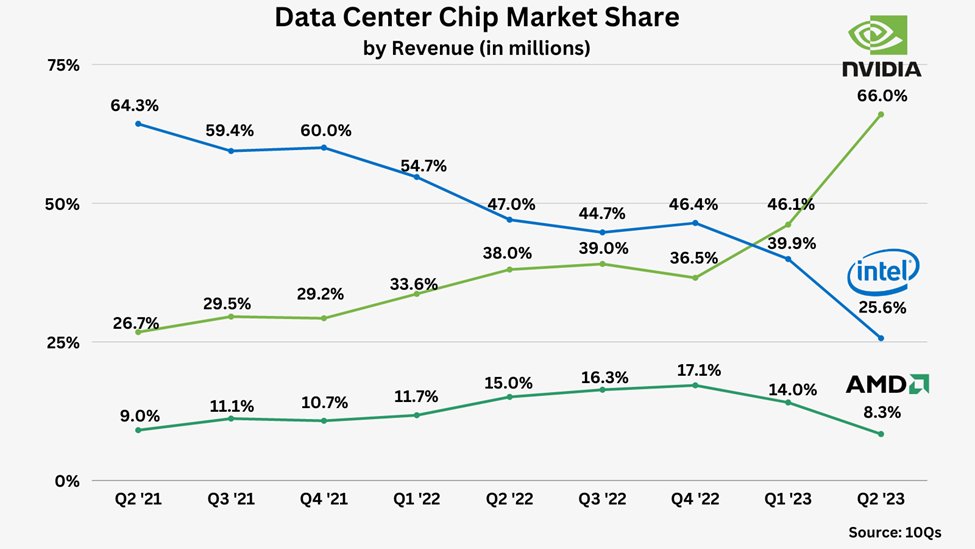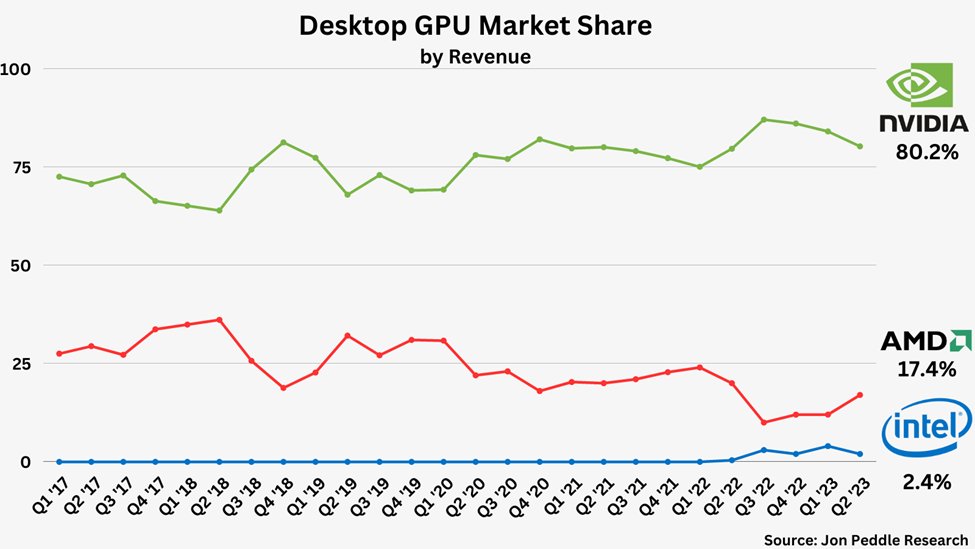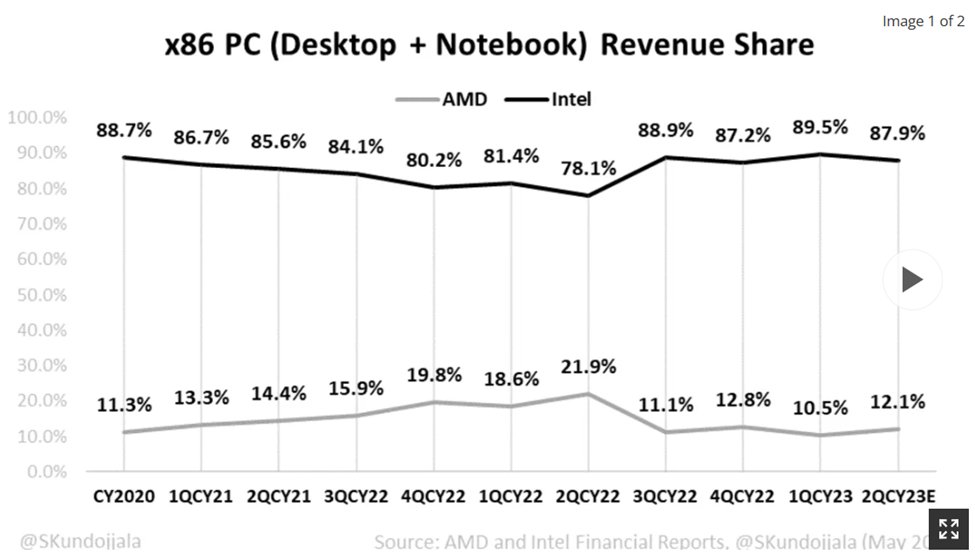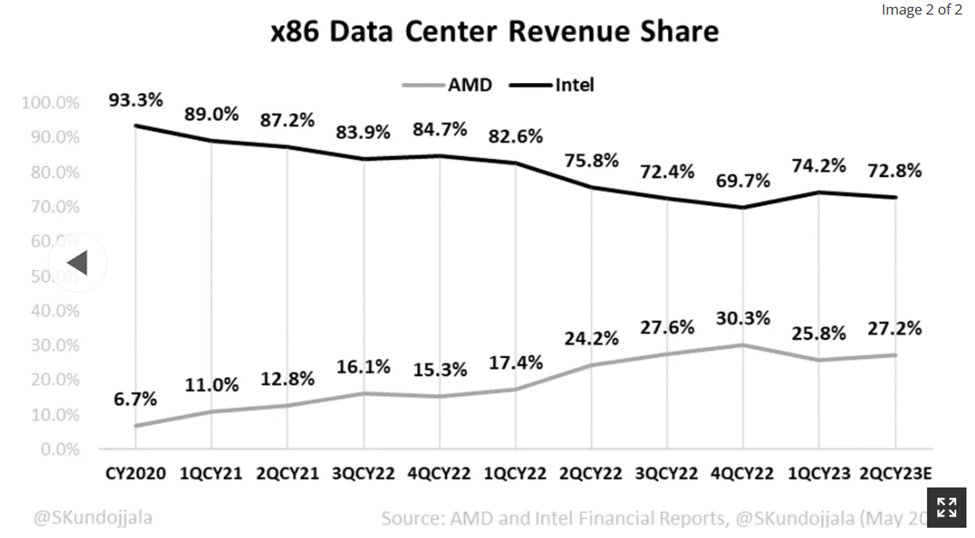Introduction:
3 market leaders stand out in the processor space, each with its unique strengths and market presence: Intel, Nvidia, and AMD.
In this blog post, we will delve into the core aspects of these industry giants, exploring their moats and the factors that distinguish them from one another.
Join Our WhatsApp News for real time information on semiconductors & AI
Top 3 Market Leaders in Processor Space
1. Intel: Integrated Device Manufacturing
Intel, a behemoth in the semiconductor industry, has been a household name for decades. Renowned for its dominance in the personal computer (PC) market, Intel has consistently pushed the boundaries of processing power and innovation. The moat of Intel lies in its extensive research and development capabilities, allowing the company to bring cutting-edge technologies to market.
Moat:
- Manufacturing Leadership: Intel has long held a technological edge in semiconductor manufacturing. Their advanced fabrication processes, such as the 10nm and 7nm technologies, enable them to produce chips with higher transistor density, resulting in improved performance and energy efficiency.
- Strong Brand Recognition: Intel’s “Intel Inside” campaign has solidified its brand image, making it synonymous with high-performance processors. This brand loyalty gives Intel a significant advantage in the consumer market.
Embark on a journey through the technological corridors of Intel with our quiz
How Well Do You Know About Intel?
2. Nvidia Corporation: The Graphics Powerhouse
Nvidia is a dominant force in the graphics processing unit (GPU) market and has expanded its influence into various computing domains, including gaming, artificial intelligence, and data centers. The company’s moat is rooted in its unparalleled expertise in GPU technology and its strategic focus on emerging markets.
Moat:
- GPU Dominance: Nvidia’s GPUs are renowned for their performance in graphics rendering and parallel processing tasks. This dominance extends beyond gaming to applications like scientific research, machine learning, and autonomous vehicles.
- AI and Deep Learning: Nvidia’s CUDA architecture has become the standard for GPU-accelerated computing, particularly in artificial intelligence and deep learning applications. This has positioned Nvidia as a leader in these rapidly growing fields.
Read More: Bankruptcy to Trillion-Dollar Company: Story of Nvidia
3. Advanced Micro Devices (AMD): The Disruptor
AMD has emerged as a formidable competitor, challenging the duopoly of Intel and Nvidia. The company’s rise to prominence is attributed to its Zen architecture for CPUs and RDNA architecture for GPUs, providing high-performance alternatives to traditional offerings.
Moat:
- Zen Architecture: AMD’s Zen architecture, featured in its Ryzen processors, has been a game-changer. These processors offer competitive performance at a more affordable price point, making them attractive to a broad range of consumers.
- Epic in Enterprise: AMD’s EPYC server processors have gained traction in the enterprise market, offering a compelling alternative to Intel’s Xeon processors. The cost-effectiveness and performance of EPYC processors have won over many data center operators.
| Company | Offerings | Moat | Challenges |
|---|---|---|---|
| Intel Corporation | – Core processors for PCs and laptops | – Manufacturing Leadership | – Delays in transitioning to smaller node sizes |
| – Xeon processors for servers | – Strong Brand Recognition | ||
| – Various chipsets for diverse markets | |||
| Nvidia Corporation | – GeForce GPUs for gaming | – GPU Dominance | – Limited presence in general-purpose CPUs |
| – Quadro GPUs for professional use | – AI and Deep Learning Expertise | ||
| – Tesla GPUs for data centers | |||
| AMD (Advanced Micro Devices) | – Ryzen processors for PCs | – Zen Architecture | – Historical challenges in market share and recognition |
| – EPYC processors for servers | – Growing presence in enterprise | ||
| – Radeon GPUs for gaming and graphics |
Read More: What is the Secret Weapon of AMD to Challenge NVIDIA in AI Market
Competition of Market Leaders in Processor Space
1. Nvidia is the market leader in Data Center Chip market Share
The increasing importance of GPUs in data centers is due to the growing demand for AI and machine learning applications. These applications require a lot of computing power, and GPUs are much better at parallel processing than CPUs. This means that GPUs can handle these tasks much faster and more efficiently than CPUs.
In addition, AI and machine learning applications are becoming increasingly complex, and they are requiring more and more data to train. GPUs are also well-suited for handling these large datasets.
As a result of these factors, the demand for GPUs in data centers is skyrocketing. Nvidia, the leading GPU manufacturer, has seen its market share in the data center GPU market grow from 35% in 2015 to 70% in 2022.

Contrast with CPUs
CPUs are still important for many data center tasks, and they are likely to continue to be used for many years to come. However, the role of GPUs in data centers is growing rapidly, and they are becoming increasingly important for AI and machine learning applications.

Read more: What are 5 verticals of Nvidia $1 Trillion Opportunity
2. Nvidia is the market leader in Desktop GPUs
Nvidia’s dominance in the GPU market is rooted in its technological leadership, exemplified by advanced architectures like Turing and Ampere, providing cutting-edge features such as real-time ray tracing. The company’s success extends beyond gaming, with widespread adoption of its GPUs in artificial intelligence and data center applications, solidifying its position as a key player in emerging technologies.

Nvidia’s early adoption and integration of real-time ray tracing capabilities in the GeForce RTX series set it apart, capturing the attention of gamers seeking high-performance graphics. Strategic partnerships with gaming developers and technology companies have further strengthened Nvidia’s market presence, fostering collaborations that enhance gaming experiences.
The company’s well-established brand recognition, coupled with a reputation for delivering top-tier GPUs, has contributed to customer loyalty and positioned Nvidia as a leader in the competitive GPU space.
Read More: Nvidia to Challenge Intel with Arm-Based PC Chips
3. Intel is the market leader in x86(processor) PC Space
Intel has long been synonymous with personal computer processors and has a significant presence in the data center CPU market with its Xeon processors. The company’s established brand, extensive manufacturing capabilities, and a history of innovation have contributed to its leadership position.

AMD (Advanced Micro Devices) has been Intel’s primary competitor in the CPU space. AMD’s Ryzen processors, based on the Zen architecture, gained traction for offering competitive performance at a more attractive price point. In the data center, AMD’s EPYC processors have aimed to challenge Intel’s Xeon dominance, gaining notable success in certain segments.
Read More: Understanding Parallel Processing: A Tale of Nvidia vs Intel
4. Intel is the market leader x86(Processor) Data Center space
AMD’s growing influence in the data center x86 space poses a formidable challenge for Intel, primarily due to the competitive pricing of AMD’s EPYC processors, putting pressure on Intel to reassess its pricing strategies while maintaining profitability. With AMD’s continuous innovation in architectures like Zen and EPYC processors, Intel is compelled to meet or exceed these technological benchmarks to remain competitive.

With AMD gaining market share in the data center segment, Intel needs strategic efforts to protect its dominant position. Providing customers with unique features and performance advantages is crucial for retaining market relevance. Intel must adapt strategically by refining product roadmaps and addressing perceived gaps in performance and pricing. Navigating this evolving competitive landscape is essential for upholding its leadership in the x86 space.
Read more: Why these 14 Companies Are Poised to Explode AI Chip Market to $300B by 2030
Conclusion:
Intel, Nvidia, and AMD contribute unique strengths – Intel excels in manufacturing, Nvidia dominates in GPUs, and AMD brings disruptive architectures. These companies are pivotal in shaping the future of computing as technology evolves. The competition drives innovation and benefits consumers by offering a diverse range of high-performance processors for various needs.
Image Credits: Tech & AI Investing






